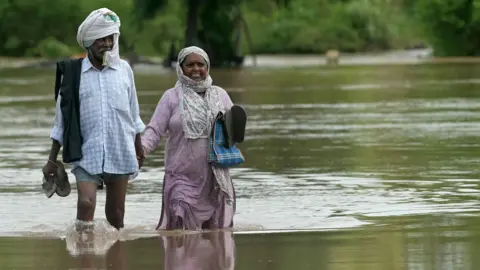At least 30 individuals have perished, and more than 354,000 residents have been affected by continuous heavy rains and flooding in the northern Indian state of Punjab. Authorities report that all 23 districts in the state have been declared flood-hit as rivers and reservoirs swell dangerously.
Approximately 20,000 people have been evacuated from vulnerable low-lying regions, and numerous relief camps are providing essential services and shelter to those displaced.
Punjab's Chief Minister Bhagwant Mann has described the situation as the worst flooding the state has faced since 1988, urging the nation to rally in support of the affected state.
Punjab is known as the food basket of India, significantly contributing to the nation’s agricultural output, particularly staples like wheat and rice. Sadly, officials estimate extensive crop damage affecting around 148,000 hectares of land.
The rapid increase in water levels of key rivers, including the Sutlej, Beas, and Ravi, poses significant risks to many low-lying areas. Additionally, several reservoirs are reported to be nearing capacity.
Response efforts include multiple disaster teams and support from the Indian army, air force, and navy, with over 100 boats and 35 helicopters deployed for rescue missions. Chief Minister Mann has toured the most affected districts, advocating for federal assistance to manage the escalating crisis.
This climatic event follows similar flooding in Pakistan's Punjab province, where approximately two million individuals have also been affected recently.




















